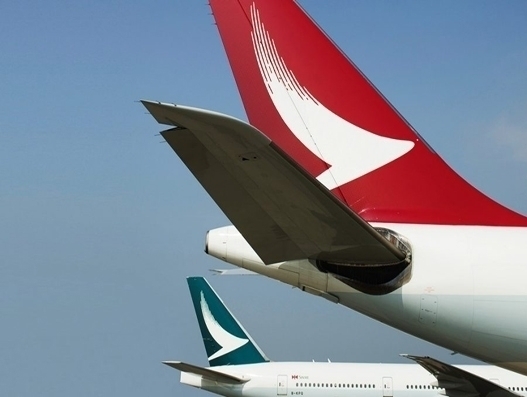
Cathay Pacific cargo numbers suffer decline from early Chinese New Year holiday
March 26, 2019: Cathay Pacific and Cathay Dragon%u2019s passenger figures have seen a slight increase of 1 percent in February this year, compared to February 2018. The two airlines have transported a total of 2,833,534 passengers last month. Capacity, measured in available seat kilometres (ASKs), increased by 5.9 percent. In the first two months of […]

March 26, 2019: Cathay Pacific and Cathay Dragon's passenger figures have seen a slight increase of 1 percent in February this year, compared to February 2018. The two airlines have transported a total of 2,833,534 passengers last month.
Capacity, measured in available seat kilometres (ASKs), increased by 5.9 percent.
In the first two months of 2019, the number of passenger carried grew by 4.3 percent while capacity increased by 6.5 percent.
The cargo traffic declined by 9.9 percent compared to the same month last year. The two airlines carried 131,320 tonnes of cargo and mail in February. The cargo and mail load factor fell by 5.0 percentage points to 60.7 percent. Capacity, measured in available freight tonne kilometres (AFTKs), decreased by 1.8 percent while cargo and mail revenue freight tonne kilometres (RFTKs) dropped by 9.3 percent.
In the first two months of 2019, the tonnage fell by 6.4 percent against a 0.4 percent dip in capacity and a 7.1 percent decrease in RFTKs.
Ronald Lam, Director Commercial and Cargo of Cathay Pacific said that the early Chinese New Year holiday resulted in distortion in both passenger and cargo revenue growth for January and February.
"The holiday was characterised by strong demand and yield growth on short-haul routes in Asia, but overall passenger volumes softened sharply in the weeks after, especially in Economy Class. As a result, revenue growth was not able to keep up with capacity increases in February.
"It was a similar story with cargo with slower demand pick-up after the holiday when compared with last year, especially out of mainland China and Hong Kong. We did however see good growth from Southeast Asia markets. We reduced some freighter capacity in February to match demand better."

